

Atomically thin nanowires convert heat to electricity more efficiently. Waste heat can be converted to electricity more efficiently using one-dimensional nanoscale materials as thin as an atom – ushering a new way of generating sustainable energy – thanks to new research by the University of Warwick.

Led by Drs Andrij Vasylenko, Samuel Marks, Jeremy Sloan and David Quigley from Warwick's Department of Physics, in collaboration with the Universities of Cambridge and Birmingham, the researchers have found that the most effective thermoelectric materials can be realised by shaping them into the thinnest possible nanowires. Thermoelectric materials harvest waste heat and convert it into electricity—and are much sought-after as a renewable and environmentally friendly sources of energy.
Dr. Andrij Vasylenko, from the University of Warwick's Department of Physics and the paper's first author, commented: "In contrast to 3-dimensional material, isolated nanowires conduct less heat and more electricity at the same time. The researchers—which included the group of Dr. Aaswath Raman: How we can turn the cold of outer space into a renewable resource. High-efficiency solar energy tech turns water into steam. A team of researchers at Rice University has developed a new technology that uses light-absorbing nanoparticles to convert solar energy directly into steam.
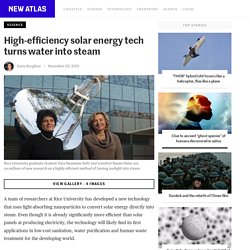
Even though it is already significantly more efficient than solar panels at producing electricity, the technology will likely find its first applications in low-cost sanitation, water purification and human waste treatment for the developing world. Approximately 90 percent of the world's electricity is produced from steam turbines. Most industrial steam is produced in large, expensive boilers, but because of its very small footprint and high efficiency, this new development promises to make steam economically viable on a much smaller scale. Sterilizing medical waste and surgical instruments, preparing food and purifying water could soon become within reach of a large chunk of the developing world, that doesn't have access to the electrical grid. The Rice technology relies on light-absorbing nanoparticles.
Scalable-manufactured randomized glass-polymer hybrid metamaterial for daytime radiative cooling. Tenkiv - The Future of Energy. Tenkiv Kickstarter Update 4 - Selective Coating. Kickstarter update 3 Our Technology. Película colocada sobre o telhado promete substituir ar-condicionado com zero consumo de energia - Engenharia é:
Nos dias quentes é impossível abrir mão de um bom ar-condicionado para suportar as altas temperaturas, seja em casa, no trabalho ou em qualquer outro lugar.
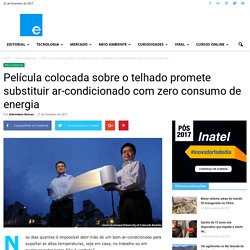
Não é verdade? Por outro lado, não é todo mundo que tem o luxo de possuir um aparelho de ar-condicionado. Alguns por motivos financeiros, outras, mais preocupadas com o meio ambiente, porque o ar-condicionado emite gases causadores do efeito estufa (CO² e HFC), ambos ligados ao aquecimento global. Pesquisadores desenvolvem película que funciona como ‘ar-condicionado’ para edifícios – CicloVivo.
Environment - Page 2. Cheaper Thermoelectric Materials. California-based Alphabet Energy plans to begin selling a new type of material that can turn heat into electricity.
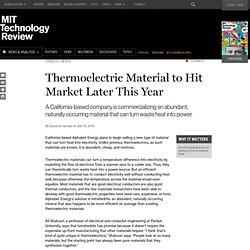
Unlike previous thermoelectrics, as such materials are known, it is abundant, cheap, and nontoxic. Thermoelectric materials can turn a temperature difference into electricity by exploiting the flow of electrons from a warmer area to a cooler one. Thus, they can theoretically turn waste heat into a power source. But an efficient thermoelectric material has to conduct electricity well without conducting heat well, because otherwise the temperature across the material would soon equalize. Most materials that are good electrical conductors are also good thermal conductors, and the few materials researchers have been able to develop with good thermoelectric properties have been rare, expensive, or toxic.
The fact that it’s abundant is another big plus, says MIT professor Mildred Dresselhaus. Heat Your Home With 240 Recycled Aluminum Cans. Heat your home with recycled aluminum cans.

It’s a simple idea, and one that many will look at and say, “Why didn’t I think of that?” This 240 can unit reportedly heats up to 10,000 BTUs or more according to the company and is “Maintenance free”. The "4 Block" Rocket Stove! - DIY Rocket Stove - (Concrete/Cinder Block Rocket Stove) - Simple DIY.
Rocket stove. Potential Energy. Como fazer um aquecedor solar caseiro de garrafa PET? Candle Powered Air Heater - DIY Radiant Space Heater - flower pot heater - Easy DIY. 1KW Off Grid Domestic Heating!!! The Candle and Flowerpot Heater. Nanotechnology Converts Heat to Power With Fabric. Materialscience/CC BY-SA 3.0Carbon nanotube bundles What if by merely sitting in your car, or by wearing a particular jacket, you could generate power?
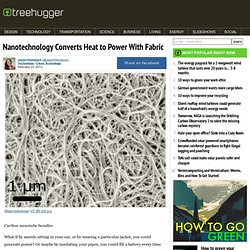
Or maybe by insulating your pipes, you could fill a battery every time you run the hot water? That's the potential held by a new nanotechnology that can generate electricity from the surrounding heat. The Center for Nanotechnology and Molecular Materials at Wake Forest University is behind the research, and has developed a material called Power Felt, a fabric-like device that can convert body heat into an electrical current. Made of carbon nanotubes held within plastic fibers, the material has the same look and feel of felt, a material well known for keeping in the heat. "We waste a lot of energy in the form of heat. Cost has prevented thermoelectrics from being used more widely in consumer products. While cost has been prohibitive so far, this isn't stopping the researchers from seeking out investors for commercial production.
What does a lake of molten aluminum have to do with renewable energy in Germany? Germany is a renewable energy powerhouse.

In the past years, they've been breaking all kinds of records, and while others are now bigger drivers of clean energy adoption (China, U.S.), the country still has a huge installed base of wind and solar power. The challenge is now to better integrate these intermittent sources of power with the rest of the grid. Intermittent doesn't mean entirely unpredictable (it's possible to have fairly sophisticated wind and solar radiation forecasts a few hours in advance), but it does mean that they can't be controlled directly at will. That's where molten lakes of aluminum, among other things, come in...
Heat your house with car tyres and earth. Energy hungry America teaches the world how to build ecological houses.
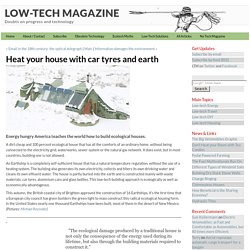
A dirt cheap and 100 percent ecological house that has all the comforts of an ordinary home, without being connected to the electricity grid, waterworks, sewer system or the natural gas network. It does exist, but in most countries, building one is not allowed. An Earthship is a completely self-sufficient house that has a natural temperature regulation, without the use of a heating system. The building also generates its own electricity, collects and filters its own drinking water and cleans its own effluent water.
The house is partly buried into the earth and is constructed mainly with waste materials; car tyres, aluminium cans and glass bottles. This autumn, the British coastal city of Brighton approved the construction of 16 Earthships. Earthships are the brainchild of American architect Michael Reynolds, who first put the concept into practice in the seventies, during the first oil crisis. Thick walls. Las ventanas que son capaces de bloquear el calor asociado a la luz del sol son una realidad. Conseguir ventanas con cristales que aíslen tanto de la luz como del calor que los rayos del sol generan en el interior de las estancias.

Ese es el propósito de una tecnología de recubrimiento basada en capas de Indio-Óxido de Estaño (ITO) que han probado en Lawrence Berkeley National Laboratory.